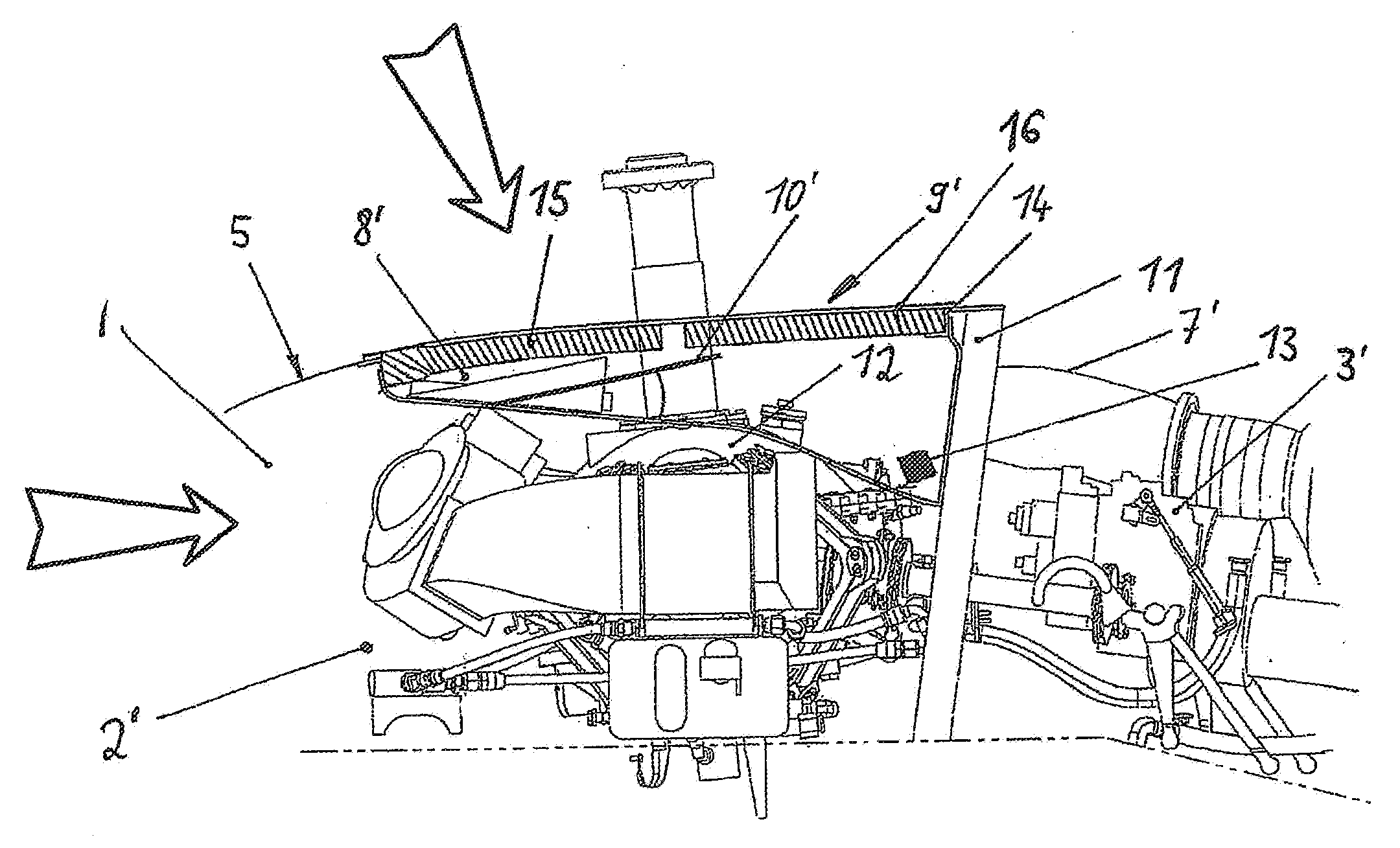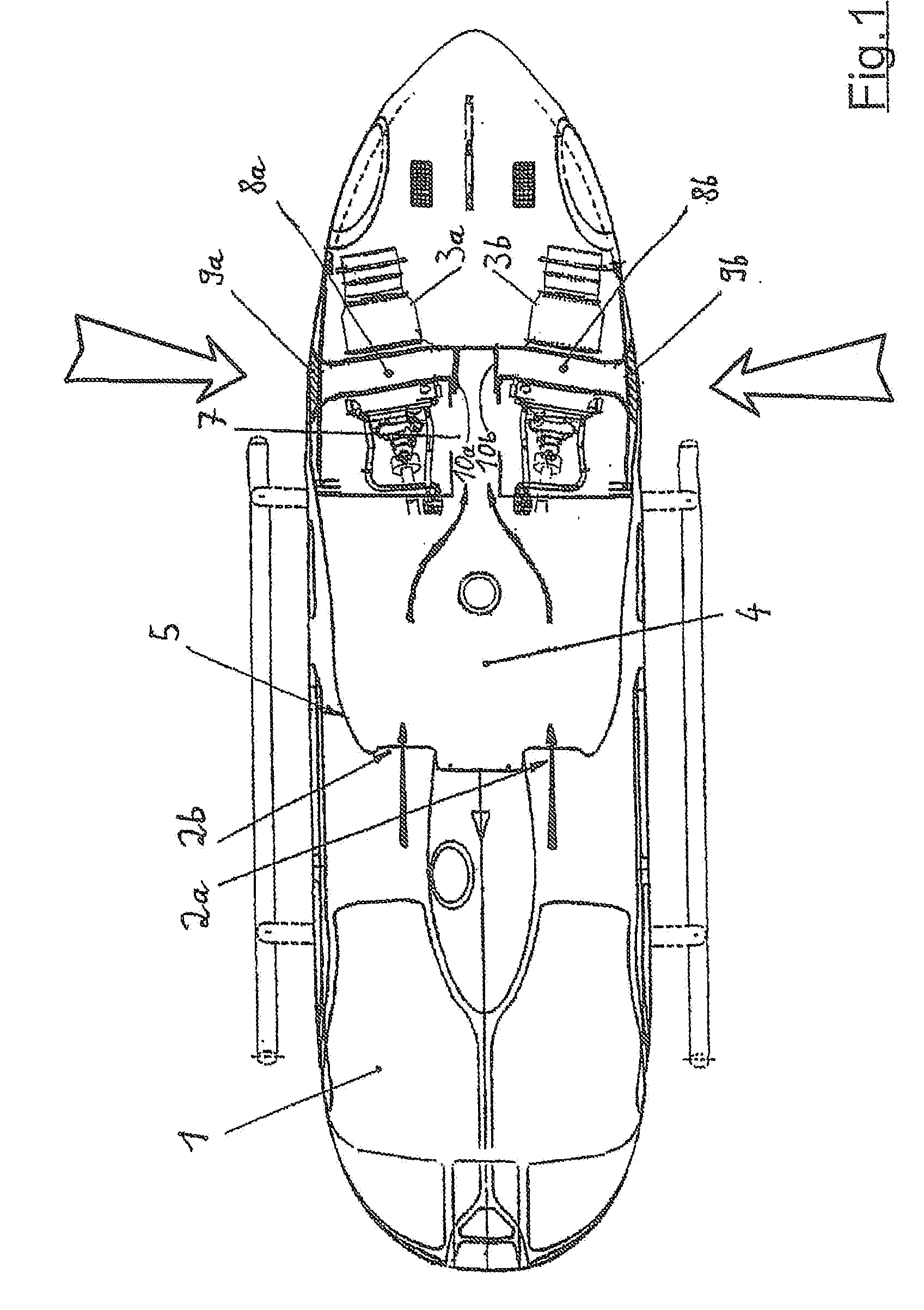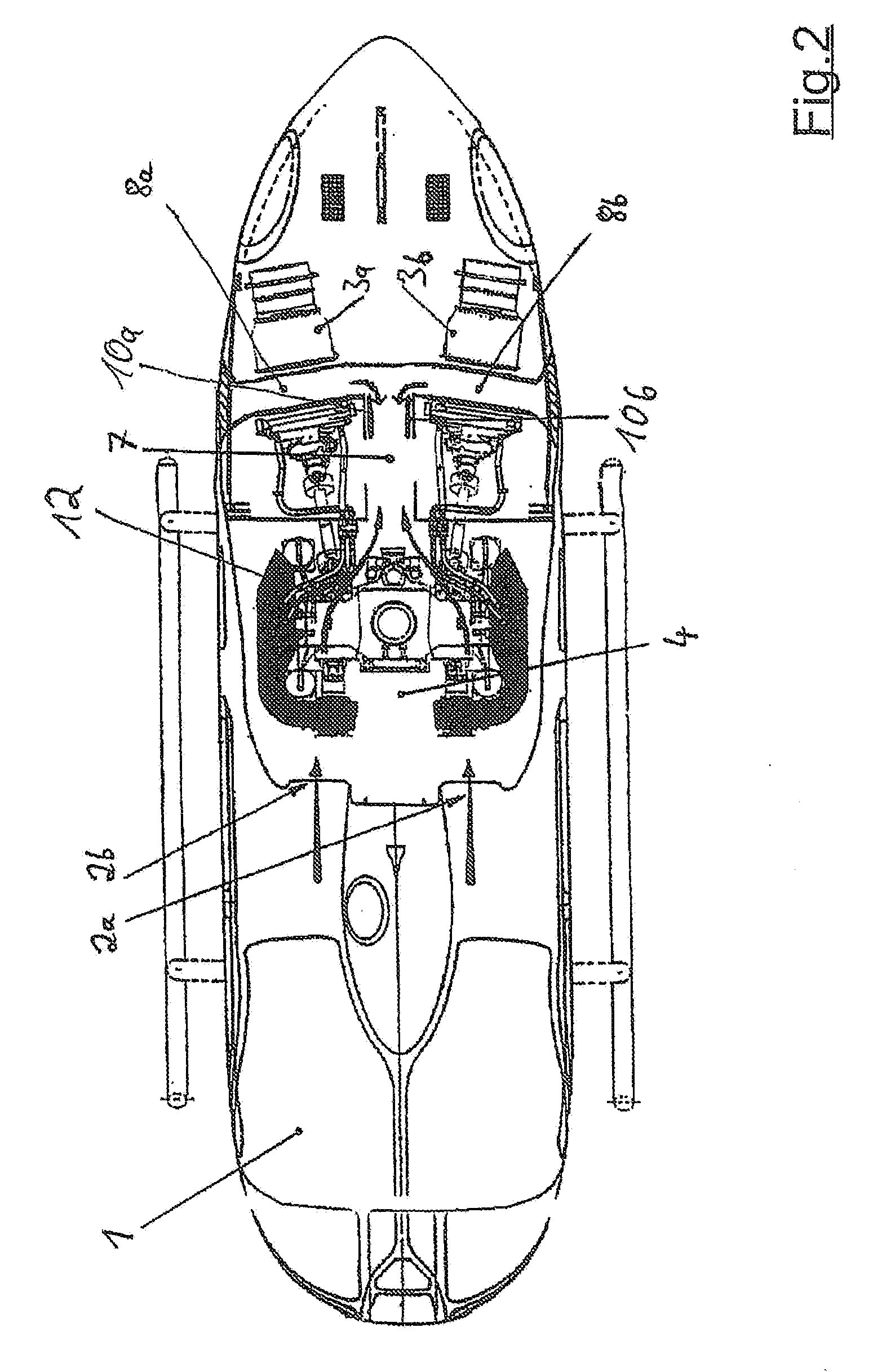Device for feeding combustion air to an engine of an aircraft
a technology for combustion air and aircraft engines, which is applied in the direction of machines/engines, mechanical equipment, transportation and packaging, etc., can solve the problems of inability to clean, and inability to meet the requirements of maintenance, etc., and achieve the effect of reducing engine wear and simple technical means
- Summary
- Abstract
- Description
- Claims
- Application Information
AI Technical Summary
Benefits of technology
Problems solved by technology
Method used
Image
Examples
Embodiment Construction
[0028]In the following description and in the figures, for the purpose of avoiding repetition, the same reference characters are used for identical components, provided no further differentiation is required or sensible.
[0029]According to FIG. 1 in the upper part of a cell 1 of a helicopter there is a left-hand air inlet 2a and a right-hand air inlet 2b arranged adjacent to it, with both air inlets being used in normal operation. From the environment, combustion air flows to an engine 3a and an engine 3b arranged in the interior of the cell 1. A primary air-inlet duct 4, which starts at the air inlets 2a and 2b, passes through a main gearbox (not shown in detail in the illustration) of the helicopter.
[0030]In order to implement a two-way airstream concept, apart from the air inlet duct 4 that leads into a central duct 7 near the engine, two further air inlet ducts 8a and 8b each with associated inlet-cover filter elements 9a and 9b are arranged opposite each other on both longitudin...
PUM
 Login to View More
Login to View More Abstract
Description
Claims
Application Information
 Login to View More
Login to View More - R&D
- Intellectual Property
- Life Sciences
- Materials
- Tech Scout
- Unparalleled Data Quality
- Higher Quality Content
- 60% Fewer Hallucinations
Browse by: Latest US Patents, China's latest patents, Technical Efficacy Thesaurus, Application Domain, Technology Topic, Popular Technical Reports.
© 2025 PatSnap. All rights reserved.Legal|Privacy policy|Modern Slavery Act Transparency Statement|Sitemap|About US| Contact US: help@patsnap.com



